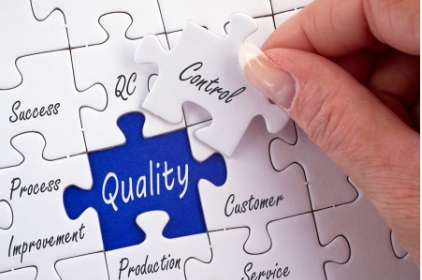- Home
- Continuous Improvement Certification Online
- Quality Control and Improvement
quality control and improvement
quality control and improvement support why you choose a specific product or service

Undoubtedly, when making a purchase, you are always looking for the best quality product or service, but do you really know what supports the quality of that product or service?
Quality control and improvement usually sound similar, the truth is that they are two very different concepts and functions, complementary for quality excellence.
Quality as a natural factor in any organization means complying, and as a competitive advantage it means exceeding.
When we talk about quality control, it refers to all the operations that are carried out to meet the established requirements. Meanwhile, quality improvement encompasses all the tasks and processes that are necessary to meet the different requirements. Therefore, the quality management system is related to both concepts.
In order to have a referential scenario of quality behavior, it is necessary to have indicators. A quality indicator is the established measure used to determine how well the organization is meeting customer needs, as well as other operational and performance expectations.
Quality indicators are measurable information. These provide information about the performance of a process; and determine the quality of services; and highlight potential quality problems; identify areas that need further study and research; and they track changes over time.
Quality planning is a process that allows the development of an anticipated strategy that ensures that the products and services that are created and provided have the capacity to satisfy the needs and expectations of customers.
The quality control process performs or participates in the characterization of new products or services in their different development phases and in the establishment of their quality specifications.
Quality improvement is one of the 8 principles of quality management. The UNE-EN-ISO 9000 standard states that “continuous improvement of the overall performance of the organization should be a permanent objective of the organization”.
The objective of continuous quality improvement is to increase the organization's ability to satisfy its customers and increase this satisfaction through the improvement of its performance. The general actions that are necessary to carry out continuous improvement are:
- Analysis and evaluation of the existing situation to identify areas for improvement.
- Setting goals for improvement.
- The search for solutions to achieve these objectives.
- The selection of solutions.
- The implementation of the decided actions.
- Analysis of the results of the actions implemented to determine if the objectives have been achieved.
ADVANTAJES of quality control and improvement

Applying continuous improvement, it is possible
to be more productive and competitive in the market since:
The cycle of continuous improvement or Deming PDCA cycle (Plan, Do, Check, Act), shows how to achieve continuous improvement in any process.
Inside of the international certification programs from InArtifexYou will find a diversity of materials both in the quality environment, as well as in other aspects of training and knowledge consolidation such as Lean, Six Sigma, Theory of Constraints, and other diversity of models of excellence of World class.
We invite you to enroll in the programs that we have designed for you.